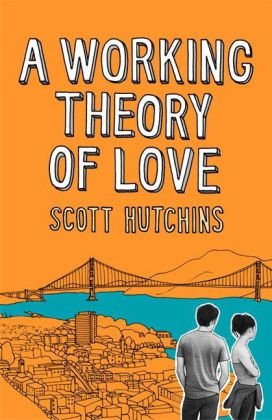
Maybe one of the most comprehensive contemporary books when it comes to raising existential questions and subtle critiques of daily life through a mix of banal and futuristic situations, all through the lens of love as a `working theory`.
We enter the world alone and we die alone, the question is what happens in between and if we ever learn how to juggle with loneliness and the social animal inside us. Scott Hutchins plays with all these existential questions as he creates what seems to be your average guy, Neill Bassett Jr., and puts him in the craziest situation – to make an intelligent computer using his father’s (Dr. Bassett) thoughts and memories (taken from his journals). Adding the fact that his father committed suicide more than 10 years ago and that Neill is a young divorcé-cum-linguist, the narrative turns into a contemporary bittersweet tale of losing and finding oneself, all in the name of love, just not as we would normally define it.
Not the run-of-the-mill insoluble – Why am I here? Who am I? – but the pressing questions of adult life: Really? and Are you sure? and Now what? , Neill and Henry Livorno, his boss at Amiante Systems, an old tech genius, question life and their quest for understanding what makes a human, human and how that can be recreated inside a computer. Dr. Bassett, therefore, becomes the computer-dead father of Neill, a computer that considers itself human as the team “pours” more ingredients of humanity in it – virtues and sins, desires, knowledge and the need to understand oneself. Seeming is being, Livorno argues, as Neill works not to make a better AI (or chat robot, as is commonly known), but to question his father and himself through the most banal technique there is – instant messaging. It is a quest for knowledge, but in Neill’s case it’s not about rewriting history, but rewriting his past so as to deal with his present and, maybe, believe in his future – the relationship with Rachel, the shady gang at Pure Encounters (a New Age kind of cult/therapy group), the talks with his ex-wife Erin, the affair with Jenn, the arguments with Livorno or Toler, stepping stones or roadblocks to overcome. Every time in life has its own geography after all, and Neill is on a mission to discover it.
A working theory of love is not about love per se, but about the new meanings that this concept has in a world filled with consumerism, loneliness, technology and an illusionary freedom gone so wrong. Every character in the book presents, literally or through the action, his or her definition of love – in the end, the question being whether one loves oneself or not. Set in San Francisco, the action creates the right pretexts to throw in heavy motives like eternity through technology, being in touch with nature and your inner voice, capitalism and its destructiveness, or simply suicide and its long term implications.
No. Nothing to confess. Just trying to resist offering any life that isn’t our real life. Then I think – make your real life worth offering. Be your seem. Seem your be. , because seeming and being are not the same, as Neill understands the hard way. A novel about self-questioning and reinventing, written in a witty, brainy manner, A working theory of love is easy to read, has great descriptions (no wonder as Scott Hutchins was published in New York Times or Esquire, home of great narrative journalism pieces) and unfolds existential motifs of human psychology and philosophy just by brilliant chitchat with Dr. Bassett (the chat bot) or broken conversations/inner-conversations as the narrative develops. Also, one cannot ignore the Western cultural stereotypes that are colourfully present throughout Neill’s daily routine – maybe another silent critique?
Written in the first person, the novel creates a cozy, yet awkward feel towards the reader, who is absorbed in the whirlwind of Neill’s inner doubts and fears – what is even more astonishing is that Hutchins manages to recreate the feeling of anxiety without actually changing the tempo of the narrative. It becomes so acutely human, because it can happen to each one of us. We are born alone and we die alone. Love is not the answer. Now what? Just read the novel and maybe you’ll find out.
STRENGTHS
The evolution of the main character, the details in describing every setting and important character
WEAKNESSES
Some may find the same rhythm throughout the narrative a bit confusing, as there are no marked epiphanies, though the main character changes
RECOMMENDATIONS
For all of you appreciate a good descriptive, psychological, bittersweet kind of narrative

Niciun comentariu:
Trimiteți un comentariu